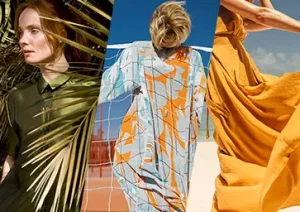
The Guardian survives today on the generosity of its readers and doesn’t take that for granted. A new campaign in partnership with Lucky Generals stresses what’s unique about the paper and its funding model.
It’s strange to think that, until relatively recently, it seemed like The Guardian newspaper was doomed.
Founded in 1821 as The Manchester Guardian (it changed its name in 1959), the newspaper was owned and funded by a charitable foundation called The Scott Trust. Yet, as print circulations declined in the early 2000s, the fund subsidising its operations started dwindling quickly.
Much of this money was spent on diversifying to online. Still, just as that was starting to bear fruit, the newspaper industry experienced a tight contraction in revenues from online advertising due in part to a shift to social media ads.
In June 2011, Guardian News and Media revealed increased annual losses of £33 million, and for the three years up to June 2012, the paper lost £100,000 a day, which prompted many to question whether The Guardian could survive.
What saved it was ultimately a mixture of Trump and Brexit, which helped to boost readership and a shift to an innovative model of direct funding by supporters.
Supporter-funded
Rather than putting its articles behind a paywall, the newspaper asks the public to donate what they can to keep their business going. There’s no mechanism to force anyone to do this; the only motivation is a genuine wish to help this standard bearer for the liberal left. That way, its articles can stay open to all, whether they contribute.
Thanks to these donations, The Guardian finally stopped being a loss-making operation in 2020, the year of the pandemic. But it realises it has to work hard to continue to win supporters’ trust and keep the donations flowing in by emphasising the benefits of having a newspaper that is genuinely independent and free from both the financial and political control of powerful forces.
That’s why they’re unveiling a new global marketing campaign titled ‘Not for sale’, emphasising the title’s unique ownership model and strong tradition of robust editorial independence.
Fresh approach
The campaign is a collaboration between The Guardian’s marketing team with Lucky Generals leading on creative strategy and execution, supported by The Guardian’s in-house studio team from OLIVER with PHD leading media planning and buying.

This is The Guardian’s first brand campaign since 2019’s D&D-winning Hope is Power, and embraces a new strategic and creative approach.
Fresh, bold designs and confident statements of independence are based on the idea that The Guardian’s supporter-funded model allows it to be open to all but beholden to no one. This gives it the power to break stories no one else can.
Ad and posters
A brand new ad directed by New York-based duo Rubberband and created by Lucky Generals showcases how The Guardian delights and challenges readers around the world. The ad charts this multitude of reactions and features a voiceover from writer and artist Inua Ellams.
With an intense and emotive soundtrack, it quickly cuts between shots of how The Guardian is consumed by people, while the voiceover uses single, powerful words to describe the emotions it stirs and the way its content is used.
The campaign also features a range of bold and bright posters that will run alongside each other digitally and out of home, proudly proclaiming The Guardian to be ‘Loved’, ‘Hated’, ‘Trusted’, ‘Feared’, ‘But never controlled’.
Emphasising the unique
“With ‘Not for sale’, we focused on what makes the Guardian unique in the news landscape,” explains Cressida Holmes-Smith, managing director at Lucky Generals. “Because it is reader-funded, rather than owned by controlling interests like billionaires or politicians, its journalism can never be influenced or controlled.
“We knew the creative idea had to be as impactful as the paper itself and really drive home the vast range of emotions and reactions its unique publishing model gives it – but in a way that no one would be expecting. From the TV to the OOH, we wanted to show just how ingrained the paper is in society but also how playful it can be.”
The campaign creative will appear worldwide across The Guardian’s own channels and span audio, video, newsletters, print and social, with a paid media focus in the UK and Europe.
Digital screens and posters will also feature across major European cities in The Guardian’s biggest-ever European marketing push, including Amsterdam, Berlin, Dublin and Paris, as well as London, Manchester, Bristol, Liverpool and Edinburgh.


The ad will feature on Channel 4, both on-demand and linear, as well as in UK cinemas from 25 September and on a range of digital and social platforms across Europe.
New beginnings
Joel Midgley, head of marketing at Guardian News & Media, gives some more context to the thinking behind the campaign. “The Guardian isn’t like other media brands, and our campaigns shouldn’t be either,” he explains. “Everything we’ve produced is grounded in insights about what readers love most about us – a strong foundation that has enabled us to be playful, unexpected and bold in the execution. This is the beginning of something new for us, and we can’t wait to see reader responses.”
The Guardian is currently embarking on a new three-year strategy to build on its position as one of the world’s leading quality news publishers, aiming to become more global and more digital, with more paying supporters and producing more world-class journalism.
“Over the last decade, we have vastly increased The Guardian’s global reach, readership and revenues, now attracting more than one million paying supporters each month,” adds Anna Bateson, chief executive of Guardian News & Media. “Readers tell us they support The Guardian because they believe, like we do, in robust independent media that is open to all, funded by many, and beholden to no one.
“Our new Europe edition and our bold new marketing message carry forward this mission and will help us to cultivate even deeper relationships with readers, advertisers and other partners who believe in our values.”



